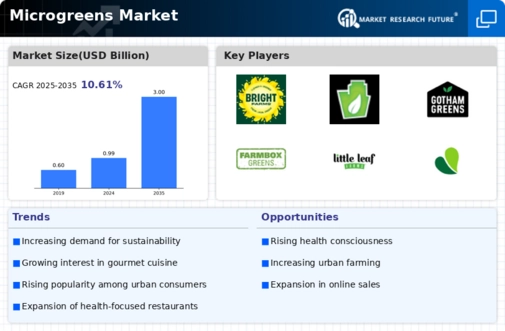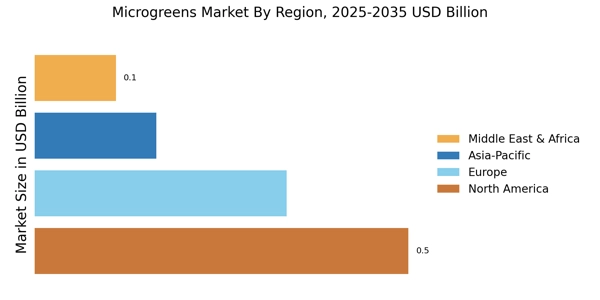The Microgreens Market has witnessed significant growth due to an increasing demand for healthy and organic food options among consumers. This market is characterized by a diverse array of players ranging from small-scale growers to larger agricultural firms, specializing in the production and distribution of various types of microgreens.
Competitive insights reveal that companies in this space are focused on sustainability, innovation, and meeting the demand for fresh produce year-round.
As interest in gardening and home cultivation grows, many firms are capitalizing on these trends by developing user-friendly growing systems and offering educational resources.
The competitive landscape is shaped by factors such as product quality, brand recognition, geographical presence, and the ability to respond quickly to changing consumer preferences.
BrightFarms has established a significant presence in the Microgreens Market by focusing on sustainable practices and local sourcing.
The company is known for its innovative greenhouse farms, which are strategically located near major urban areas, allowing for fresh microgreens to be delivered directly to consumers with minimal transportation.
This not only ensures product freshness but also helps in reducing the carbon footprint associated with food transport.
BrightFarms excels in providing a variety of microgreens that cater to the health-conscious consumer, alongside a commitment to organic farming methods.
The company’s strength lies in its ability to leverage technology for efficient production and distribution, coupled with strong partnerships with retailers and food service providers that enhance its market reach and visibility.
Urban Cultivator specializes in providing indoor growing systems that empower consumers and businesses to grow their own microgreens and herbs.
With a focus on sustainability and convenience, Urban Cultivator has positioned itself as a leader in the urban farming niche of the Microgreens Market.
The company offers a unique product range that includes countertop growing appliances, which are designed for both residential and commercial use.
Urban Cultivator's commitment to education and customer support enhances its appeal to a growing base of urban gardeners and food enthusiasts.
Moreover, Urban Cultivator has been active in forming partnerships to expand its distribution capabilities and engage in strategic mergers to enhance its product offerings and market reach.
This proactive approach positions Urban Cultivator favorably within the competitive landscape, as it continues to innovate and meet the needs of an increasingly health-focused consumer market on a global scale.


















Leave a Comment